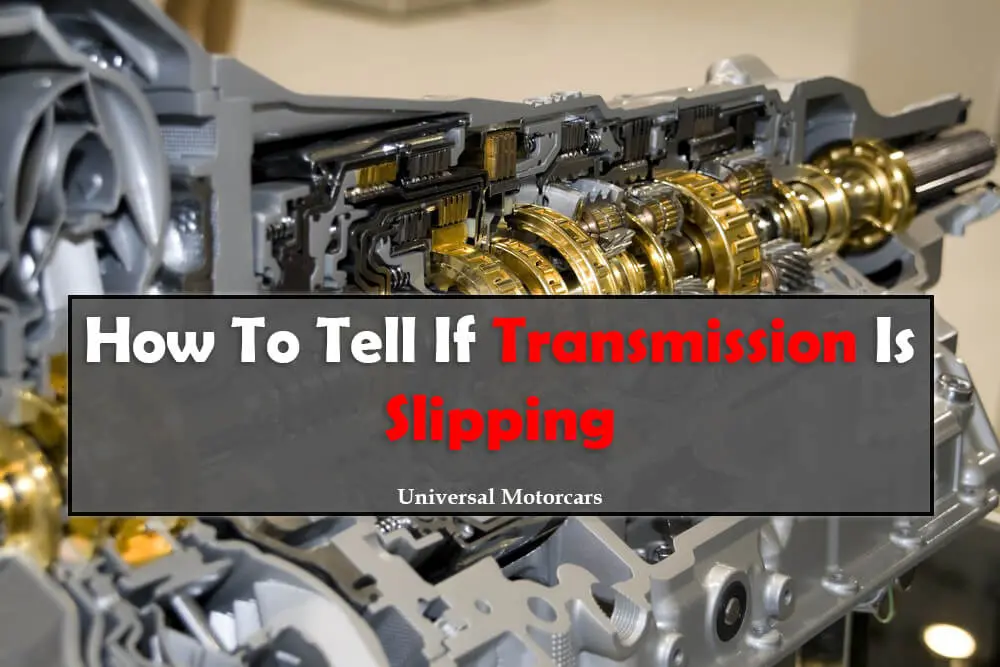There may come a time when you’re driving over ice. No matter how much you put force on the accelerator, you don’t feel your car responding to it. This situation is called a transmission slip. Although the problem lasts only for a couple of seconds, not paying attention to it can lead to a significant issue.
Symptoms of Transmission Slipping
There are several symptoms that you can observe when you feel while having a transmission slip. Although such symptoms may indicate other issues too; however, it is most likely to cause a transmission slip.
Your transmission can wear and tear with time and you need to have it maintained for functioning properly. While having transmission slip, you can check your vehicle for the following symptoms:
- Engine light constantly turning on
- Excessive RPM over 3,500
- Unusual or burnt smell
- Acceleration delays
- Trouble while shifting gears
- Car responding harshly to change in the gears
- Transmission noises
If you observe such symptoms and are facing transmission slip, then it’s better to get your vehicle’s transmission checked right away.
Get help from auto repair shop.
What Causes of Transmission Slipping?
Now that you know what the symptoms of transmission slipping are, it’s time to know what causes transmission slipping. There can be several reasons for transmission slipping.
One common reason can be low fluids. Your vehicle’s fluid levels are important elements to keep in check. They tend to decrease as well as get contaminated with debris with the passage of time. Your transmission fluid is one of these fluid elements that need to be checked. If your transmission is slipping, it’s possible that either your transmission fluid is low or is contaminated, causing hard shifting of gear. If that’s the case, you need to get your transmission fluid checked right away to know what the issue is.
In addition to the transmission fluid, other parts of the transmission also break down with time. This happens due to irregular maintenance, harsh shifting, and excessive acceleration. The result is that the transmission gets worn out, making it slip.
Another reason that will cause transmission slipping is the issue of the clutch. This is perhaps the most common culprit; however, it is mostly considered in manual cars. Just like the transmission, the clutch can also become worn out, making it harsh in shifting gears. However, many vehicles have resilient clutches now that only need replacement from above 20,000 to 200,000 miles.
How to Fix Transmission Slipping?
For having the remedy it is necessary that you focus on what the issue is. If the issue is with your transmission fluid, then you’d probably need to take it to the garage to get it checked. They will flush it out to see if it needs changing or not. If not, then the fluid will be added back alongside new fluid to make sure it meets the required level.
Apart from that, if you’re having a burnt smell, then it’s most likely that the internal circuit of your transmission has burnt. This makes it compulsory for you to get the vehicle checked right away as it poses a dangerous situation, and can cause a fire. The issues with the circuit wire will most likely make the car incompetent to accelerate.
In addition to the circuit issue, the gears and clutch may be needed to be swapped. This is an expensive solution as it will need to open, change, and install new parts. However, the result will be a smoothly running car. Getting parts replaced will reduce the issue significantly, and your vehicle will have a smooth drivetrain.
You can get the best auto transmission repair services here.
Is It Safe Driving With Transmission Slipping?
To summarize it, the answer is no. Driving your car with any issue isn’t recommended, let alone transmission slipping. If you’re experiencing issues with your vehicle such as burning smell, harsh shifting, gear slipping, and check engine light turning on again and again, then it’s probably your transmission issue.
Instead of letting it go and getting your transmission worn out completely, it is recommended that you take it to the garage to get it checked immediately. This will help minimize the issue as well as negate the risk of any extensive damage.

